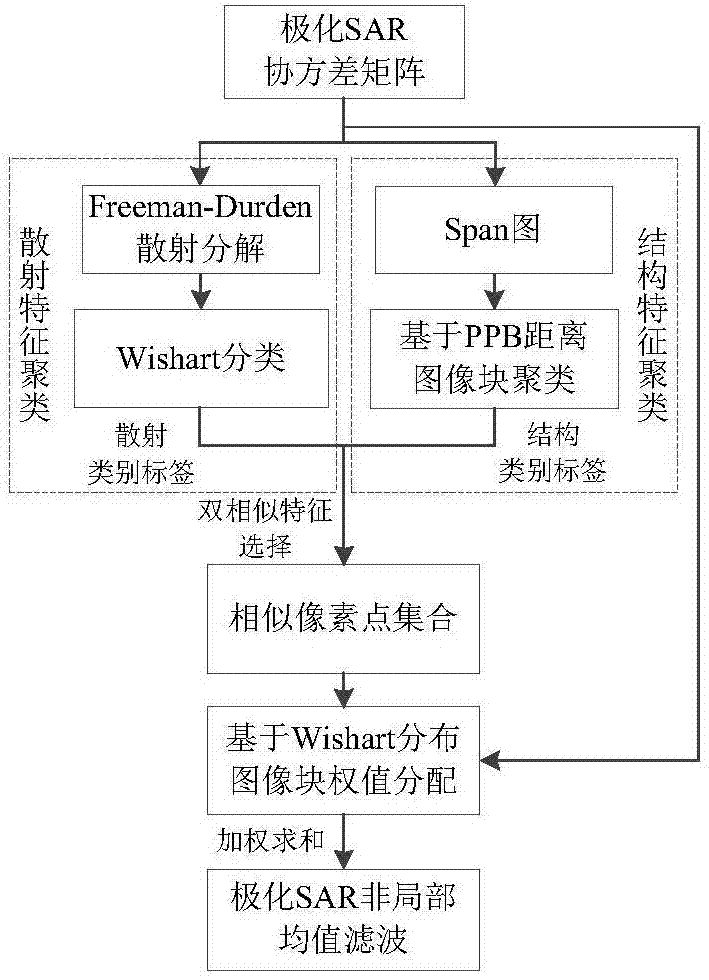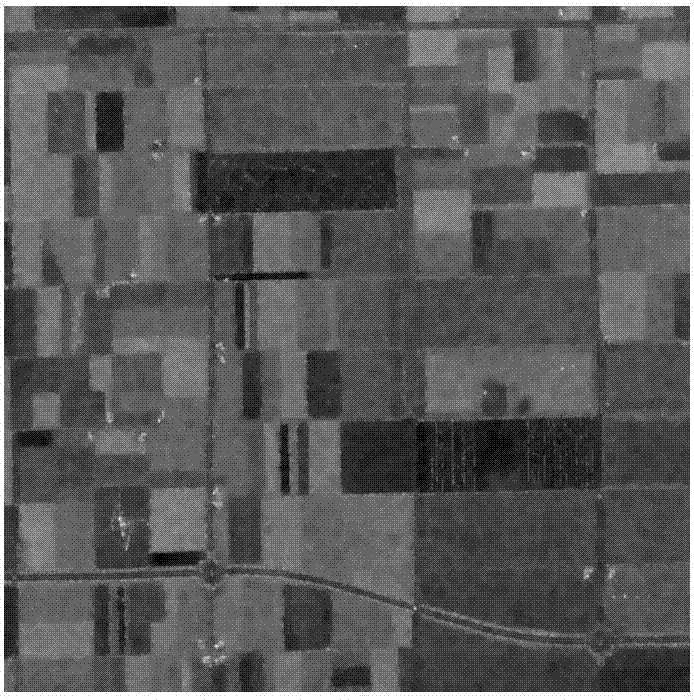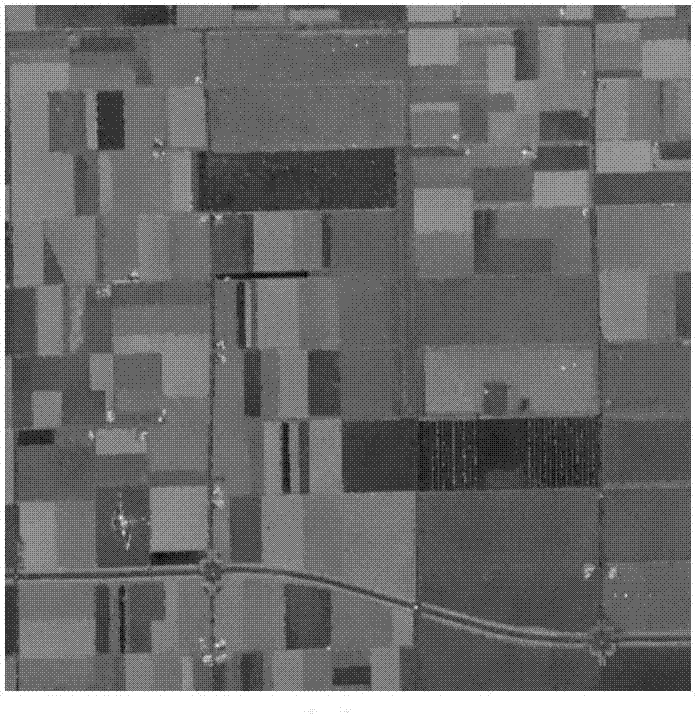Polarization SAR non-local noise reduction method based on dual feature cluster homogeneous pixel selection
A non-local, pixel-based technology, applied in image enhancement, image analysis, image data processing, etc., can solve the problem of insufficient maintenance of polarimetric SAR image structure information and scattering information, and achieve the effect of suppressing coherent speckle
- Summary
- Abstract
- Description
- Claims
- Application Information
AI Technical Summary
Problems solved by technology
Method used
Image
Examples
Embodiment Construction
[0043] A non-local noise reduction method for polarimetric SAR based on dual-feature clustering and homogeneous pixel selection, including the following steps:
[0044] (1), select homogeneous pixels for each pixel, the specific steps are as follows:
[0045] 1a), calculate the Span diagram of the polarimetric SAR covariance matrix data;
[0046] 1b), for the i-th image block vector containing the d-dimensional space, calculate the mean shift vector M containing the statistical distance (PPB) of the block on the Span map h,g (x i ):
[0047]
[0048] In the formula:
[0049]
[0050] P(x)=c p,d p(||x|| 2 ),
[0051] g(x)=-p'(x),
[0052] x i,k is the i-th image block vector x i The kth data of x j,k is the jth image block vector x j The kth data of p(||x|| 2 ) is a Gaussian kernel function, c p,d is a normalization constant, h is the bandwidth;
[0053]1c), in the kernel function window, calculate the mean shift vectors of all feature space data points sequ...
PUM
 Login to View More
Login to View More Abstract
Description
Claims
Application Information
 Login to View More
Login to View More - R&D
- Intellectual Property
- Life Sciences
- Materials
- Tech Scout
- Unparalleled Data Quality
- Higher Quality Content
- 60% Fewer Hallucinations
Browse by: Latest US Patents, China's latest patents, Technical Efficacy Thesaurus, Application Domain, Technology Topic, Popular Technical Reports.
© 2025 PatSnap. All rights reserved.Legal|Privacy policy|Modern Slavery Act Transparency Statement|Sitemap|About US| Contact US: help@patsnap.com



